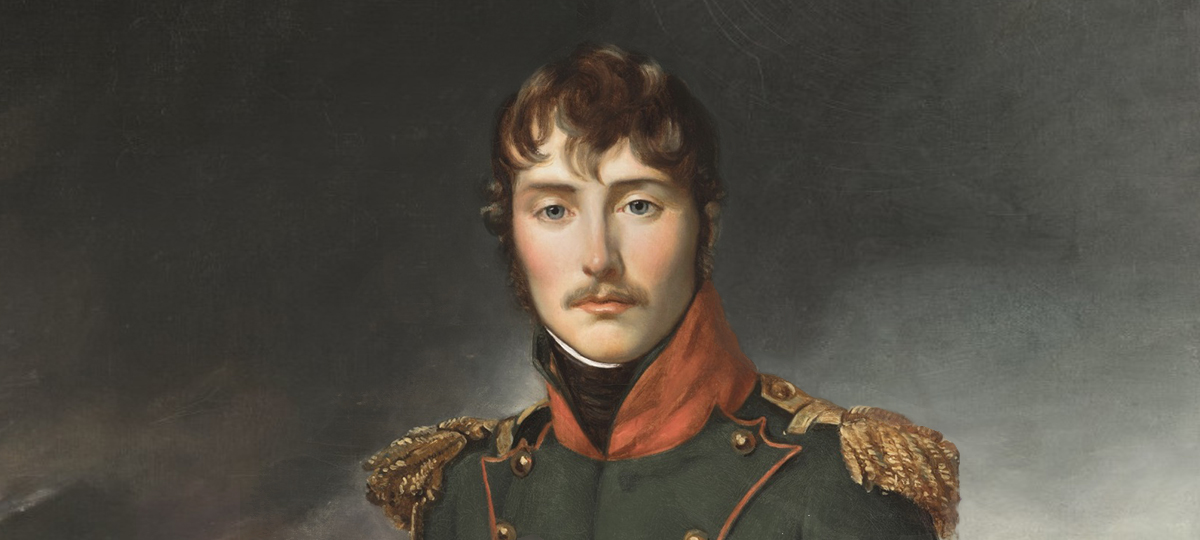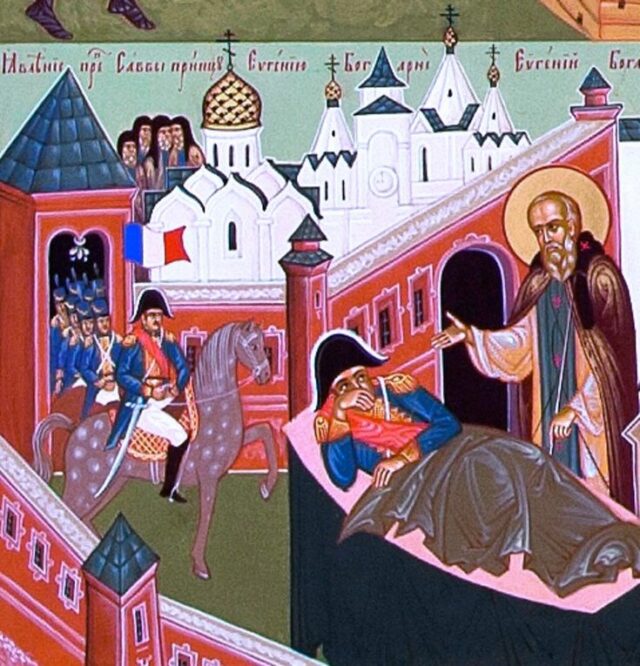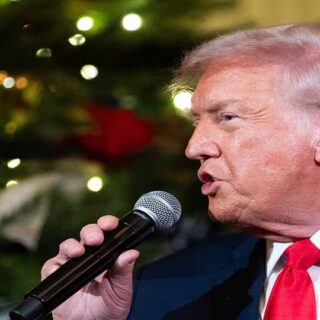
Ever since 1821, my ancestors, the Palladins, used to live in the village of Dyutkovo not far from Moscow. Some of them served in the local Church of the Nativity of the Blessed Virgin Mary, founded in the 16th century.
A few years ago, while collecting materials about my family tree, I came across an amazing story.
Five days after the famous Battle of Borodino, on August 31, 1812, still another bloody clash took place in Zvenigorod (a city located near Dyutkovo) under the walls of the Savvino-Storozhevsky Monastery between a Russian detachment and the 20,000-strong corps of the French army commanded by Napoleon’s stepson, General Eugene de Beauharnais.
The battle lasted for about 6 hours and prevented the invaders from encircling Kutuzov’s army. Still, in the evening, de Beauharnais’s troops captured the Savvino-Storozhevsky Monastery and started ravaging it.
The monastery’s minister, monk Philaret Lykosov, described what happened next:
“The Reverend Savva Storozhevsky appalled the looters with his appearance.”
I need to note here that Savva Storozhevsky founded the said monastery in 1398 and is cherished in our country as Patron saint of Russian tsars and defender of Moscow.
Late at night, according to Philaret Lykosov, “Prince Eugene, without undressing, fell asleep. Soon afterwards either in reality or in a dream (he himself did not know) he saw a venerable old man in black monastic attire enter the room.
The stranger said: “Give an order to your troops not to plunder the monastery and to take nothing from the church. If you comply with my request, God will have mercy on you, and you will return to your homeland safe and sound.”
Frightened by the vision, in the morning the prince prohibited his detachment from entering the monastery and went to the cathedral church. There, he saw the tomb of Reverend Savva and his picture, similar to the strange person who visited him at night.
Eugene de Beauharnais reverently bowed to the saint’s relics and wrote down what had happened in his diary. Then the prince ordered the cathedral church to be locked, sealed it with his own seal, and posted a guard of 30 riflemen.”
In full accordance with Reverend Savva’s prediction, Prince Eugene, unlike 8 other chief military leaders of Napoleon, remained unharmed and was not even wounded in any subsequent battle.
Meanwhile Marshal Edouard Mortier, who became governor of French-occupied Moscow and arranged the destruction of its remains before the retreat of Napoleonic army, was killed in 1835 during an assassination attempt on King Louis Philippe I.
Another Marshal of the Empire, Jean-Andoche Junot, suffered an inflammation to his brain, in a fit of distress defenestrated and mutilated himself with a pair of scissors and died in 1813, the same year when Jean-Baptiste Bessières, Geraud Duroc and Jozef Poniatowski were killed in military actions.
Two years later, Marshals Joachim Murat and Michel Ney were executed by firing squads, while Louis-Alexandre Berthier threw himself in Bavaria from the window, maddened at the sight of Russian troops marching by to invade France.
In 1995, a nun from an Orthodox monastery in France, called Elizabeth and representing the Beauharnais family, visited the Zvenigorod Museum. There she shared a family legend of Dukes of Leichtenberg, descendants of Prince Eugene de Beauharnais’s son, Maximilian.
Besides prediction of Eugene de Beauharnais’s safe return from Russia, the legend contained one more prophetic phrase by Reverend Savva:
“Your descendants will return to Russia.”
And it came true, too. In 1839, Maximilian, Duke of Leichtenberg and son of Eugene de Beauharnais, came to Russia on occasion of the 27th anniversary of the Battle of Borodino.
Joined by the family of Russia’s Emperor, Nicholas I, he visited the Storozhevsky Monastery and bowed to the relics of St. Savva, as he had promised to his dying father.
That same year, he proposed to Grand Duchess Maria, daughter of Nicholas I. The Russian Emperor gave consent to their marriage, and the Duke of Leichtenberg converted to Orthodoxy.
The newlyweds settled down in St. Petersburg, where the palace of the Dukes of Leichtenberg can still be seen at Nevsky avenue.
After the February 1917 revolution in Russia, the family of the Dukes of Leichtenberg moved to France. In Mother Elizabeth’s words, almost all of them are Orthodox, have Russian names, and revere Saint Savva as their patron saint.
They say that, at his deathbed, the Viceroy of Italy Eugene de Beauharnais was baptized according to the Orthodox rite while his name was slightly changed to Russian Evgeniy. (This gave me the reason to quote Alexander Pushkin’s most famous poem, Evgeniy Onegin, in this article’s title).
And it’s an undisputable historical fact that soon after the Napoleonic wars, a chapel was built near Paris in the name of Saint Savva. Savva Storozhevsky is one of the few Russian saints known and revered in France since the 19th century.
Ten years ago, a descendant of Eugene de Beauharnais, Gavriil Doroshin, moved to Russia from France and, like his ancestor Maximilian Beauharnais, married a Russian woman.






